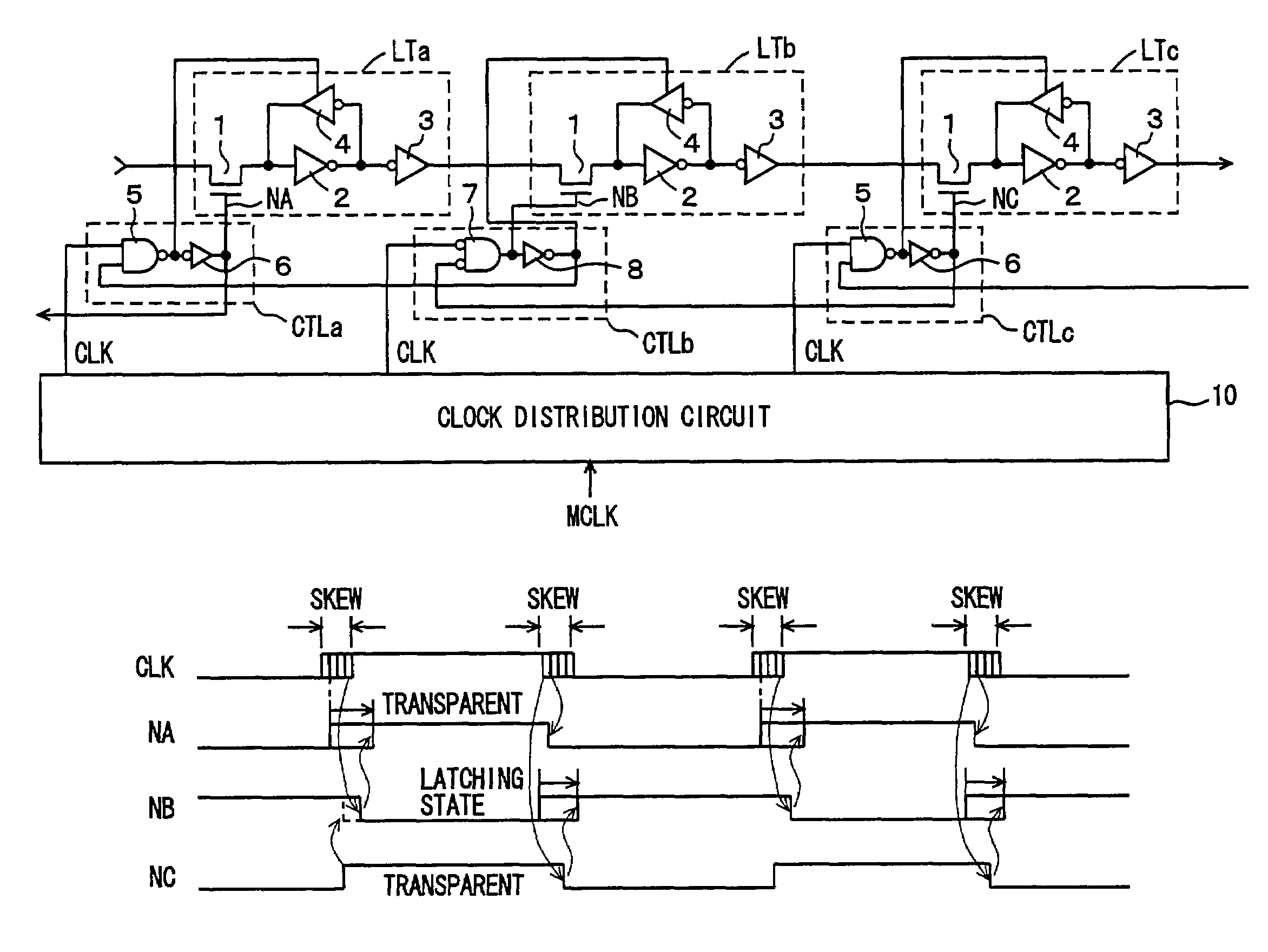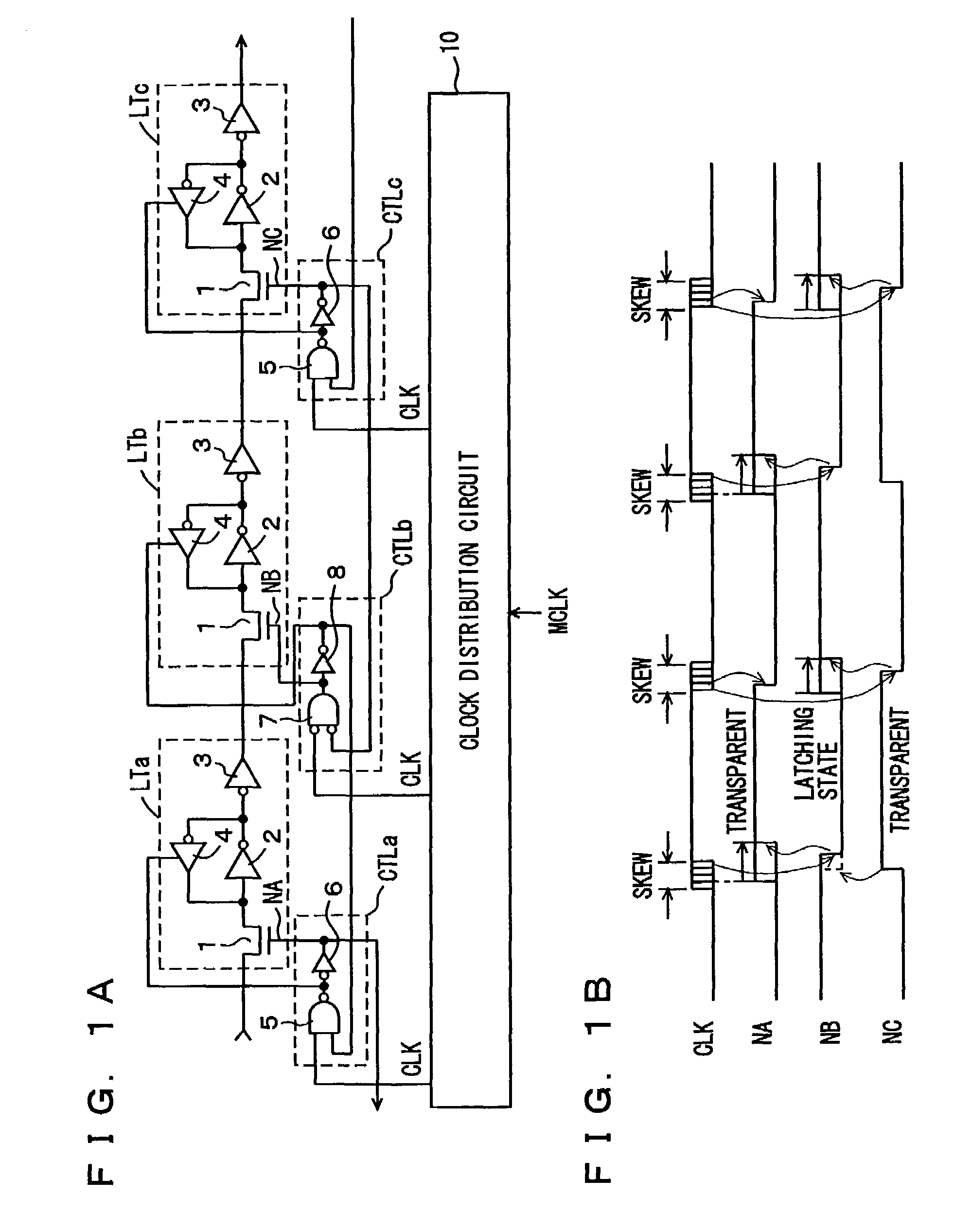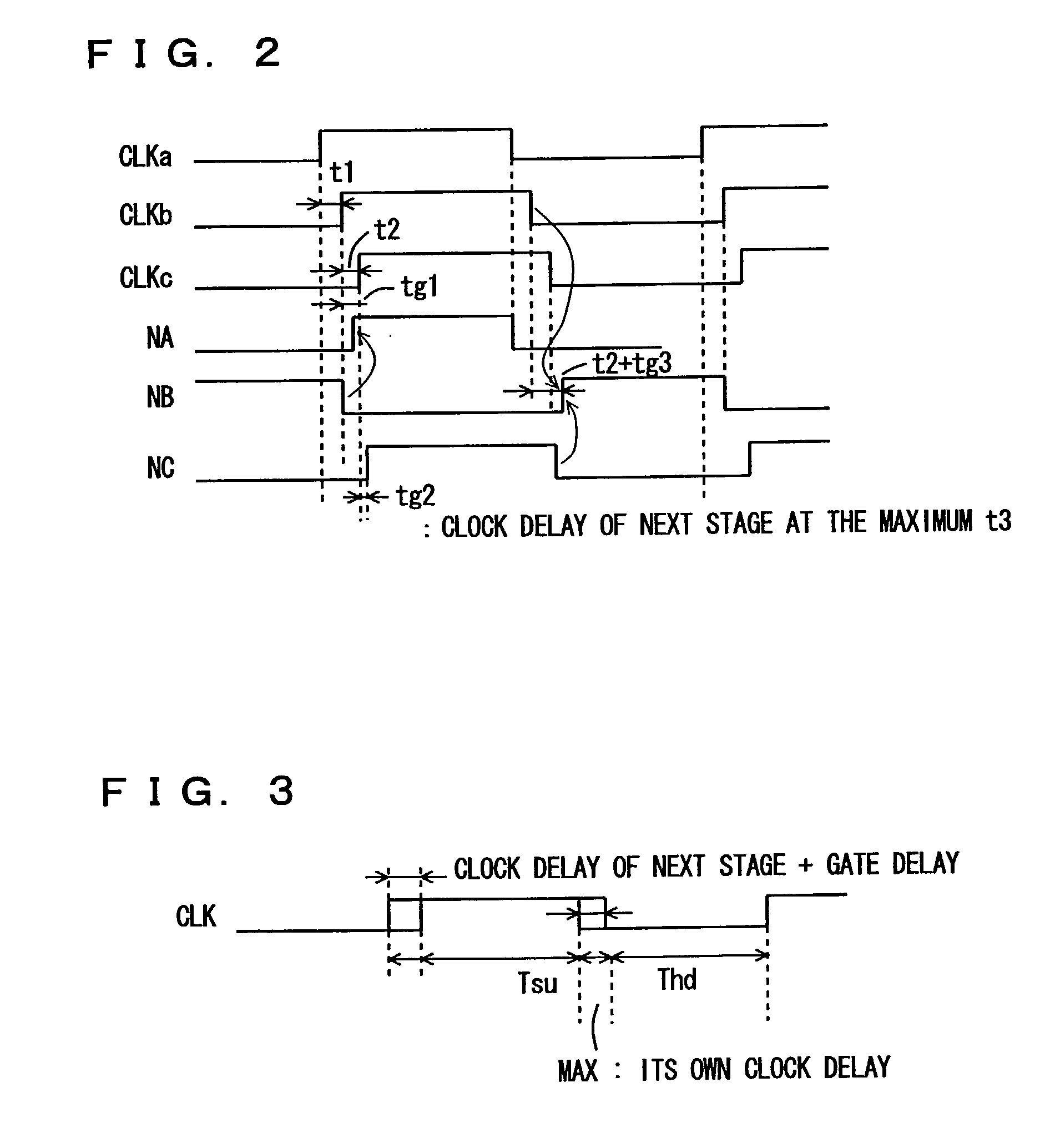Synchronous signal transfer and processing device
a technology of synchronous signal and processing device, which is applied in the direction of generating/distributing signals, instruments, pulse techniques, etc., can solve the problems of inability to shorten the cycle time of clock signal clk, disadvantageous increase in and inability to reduce the number of components of logical gates. , to achieve the effect of sufficient time width and reliably transferring data
- Summary
- Abstract
- Description
- Claims
- Application Information
AI Technical Summary
Benefits of technology
Problems solved by technology
Method used
Image
Examples
first embodiment
[0089]FIG. 1A is a schematic diagram showing a construction of a synchronous data transfer and processing device according to the first embodiment of the present invention. In FIG. 1A, latch circuits LTa to LTc cascaded in three stages are representatively shown. Clock control circuits CTLa to CTLc which generates control signals controlling the states (the latching state and the transparent state) of the corresponding latch circuits in accordance with clock signals CLK from a clock distribution circuit 10 and control signals for the latch circuits at the next stages, respectively are provided corresponding to latch circuits LTa to LTc, respectively.
[0090]Latch circuits LTa to LTc have the same configuration, and each includes a transfer gate 1 which selectively turns conductive in response to a control signal from corresponding clock control circuit CTLa, CTLb or CTLc, an inverter 2 which inverts data transmitted through transfer gate 1, an inverter 3 which inverts the output data ...
second embodiment
[0127]FIG. 4 is a block diagram of a synchronous data transfer and processing device according to the second embodiment of the present invention. In FIG. 4, this synchronous data transfer and processing device includes a plurality of cascaded multi-bit transfer circuits. In FIG. 4, multi-bit transfer circuits 15a to 15c cascaded in three stages are representatively shown. Multi-bit transfer circuit 15a includes latch circuits LTa0 to LTak which transmit input data DI0 to DIk, respectively in parallel. Multi-bit transfer circuit 15b includes latch circuits LTb0 to LTbk which are arranged corresponding to latch circuits LTa0 to LTak of multi-bit transfer circuit 15a, respectively. Multi-bit transfer circuit 15c include latch circuits LTc0 to LTck which are arranged corresponding to latch circuits LTb0 to LTbk of multi-bit transfer circuit 15b, respectively. These latch circuits LTa0 to LTb1, LTb0 to LTbk and LTc0 to LTck have the same configuration. Each of the latch circuits includes...
third embodiment
[0136]FIG. 5 is a schematic block diagram showing a configuration of a synchronous data transfer and processing device according to the third embodiment of the present invention. In FIG. 5, a logical circuit LGK is interposed between latch circuits LTi and Ltg. The signal propagation delay time of logical circuit LGK is longer than a clock skew.
[0137]If the number of logical stages of logical circuit LGK is great and the gate delay thereof is longer than a clock skew, a delay circuit for preventing racing is equivalently arranged in the signal / data transfer path and no racing problem occurs in latch circuits LTi and LTj. Therefore, a control signal is not fed back from clock control circuit CTLj provided for latch circuit LTj to clock control circuit CTLi provided for this latch circuit LTi. Clock control circuit CTLi controls the state of latch circuit LTi in accordance with corresponding clock signal CLK. On the other hand, since there is a possibility that a racing problem occurs...
PUM
 Login to View More
Login to View More Abstract
Description
Claims
Application Information
 Login to View More
Login to View More - R&D
- Intellectual Property
- Life Sciences
- Materials
- Tech Scout
- Unparalleled Data Quality
- Higher Quality Content
- 60% Fewer Hallucinations
Browse by: Latest US Patents, China's latest patents, Technical Efficacy Thesaurus, Application Domain, Technology Topic, Popular Technical Reports.
© 2025 PatSnap. All rights reserved.Legal|Privacy policy|Modern Slavery Act Transparency Statement|Sitemap|About US| Contact US: help@patsnap.com



